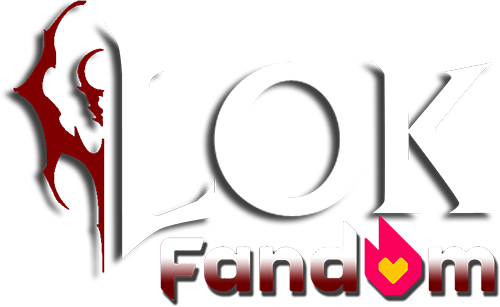Limaj daas (talk | contribs) (Adding categories) |
Limaj daas (talk | contribs) (Added a picture) |
||
| Line 1: | Line 1: | ||
| + | [[File:Meridian_Concept_Art.jpg|right|frame|Concept art for Meridian drawn by Steve A. Ross.]] |
||
| + | |||
'''Meridian''' was the political and industrial capital of [[Nosgoth]]. It was also a port city and bordered the [[Great Southern Sea]]. Much of [[Blood Omen 2: Legacy of Kain|Blood Omen 2]] was set in Meridian. |
'''Meridian''' was the political and industrial capital of [[Nosgoth]]. It was also a port city and bordered the [[Great Southern Sea]]. Much of [[Blood Omen 2: Legacy of Kain|Blood Omen 2]] was set in Meridian. |
||
Revision as of 22:28, 21 February 2010
Concept art for Meridian drawn by Steve A. Ross.
Meridian was the political and industrial capital of Nosgoth. It was also a port city and bordered the Great Southern Sea. Much of Blood Omen 2 was set in Meridian.
History
Not much has been revealed about the history of Meridian. The primary source of reference continues to be Blood Omen 2, which not only took place in the city but also introduced it.
The known history of Meridian starts with the fall of Kain's Army. After defeating Kain and killing off most of his army Hash'ak'gik, disguised as the Sarafan Lord, took over the city. The human inhabitants at the time welcomed the Sarafan, celebrating their liberation from the vampire curse.
In the two hundred years that followed, the Hylden further increased their grip upon the city. Glyph magic, deadly only to vampires, was introduced into the city's streets as vampires went further into hiding. By the end of the Hylden occupation, glyph magic was so widespread in the city that people had begun to use it in lieu of electricity.
Over time, the relationships between the humans and the Sarafan became strained in Meridian. The initial warm response faded away quickly as Sarafan rule revealed itself to be extremely fascistic. Umah told Kain in the Blood Omen 2 intro that "For two hundred years, the Sarafan have enslaved the humans under their iron rule, and hunted down and destroyed every vampire they could find." Kain could often overhear humans expressing dissent to each other in private and more infrequently, in public, about the Sarafan rule.
The humans expressed dissent at the closing of streets, the curfew at nighttime, terrible working conditions, high taxes, hostile guards, tax on alcohol, undercover kidnappings, and many other things.
Of the vampires that survived the genocide, almost all either served the Sarafan or the Cabal. The former would be allowed to live and feed because of their ability to hunt down other vampires. Upon Kain's inquiry as to why one would go against his own kind, Faustus replied "What is our kind? In serving the Sarafan, I have protection, I have power. And who better to hunt down a vampire than a more powerful vampire? History is written by the winners, Kain. That is my kind." The rest formed an underground resistance movement under Vorador known as the Cabal. These vampires, often aided by humans, sought to undermine the Sarafan at every possible opportunity.
Layout
Although little is known about Meridian's layout prior to Blood Omen 2, is safe to assume that it was much simpler and smaller. Kain remarked to Umah "This city is a labyrinth." Thus, the "industrial revolution" of Meridian as well as its expansion must have occurred under the Hylden/Sarafan rule.
Blood Omen 2 divides the city up into nine seperate parts:
- The Canyons
- The Device
- Eternal Prison
- Industrial Quarter
- Lower City
- The Wharves
- Sarafan Keep
- The Slums and Smugglers Den
- Upper City
Technology
Meridian, in Blood Omen 2, was very reminiscent of Victorian Era England. There was a great deal of industrialization and electricity had been discovered and manipulated. Lampposts were in most streets and indoor light bulbs were common. The Industrial Quarter featured a large amount of sophisticated machinery which worked solely on real-life physics as opposed to glyph magic.
